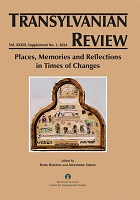Silviu Dragomir and the Monographs of the Leaders of the Revolution of 1848–1849
Silviu Dragomir and the Monographs of the Leaders of the Revolution of 1848–1849
Author(s): Sorin ȘipoșSubject(s): Cultural history, Social history, 19th Century
Published by: Academia Română – Centrul de Studii Transilvane
Keywords: Silviu Dragomir; Revolution of 1848–1849; Transylvania; historical monographs;
Summary/Abstract: In a broad sense, the studies published Silviu Dragomir (1888–1962) in the third decade of the last century outlined the directions of the future synthesis on the revolution. Based on largely unpublished documentary material, the contributions were a modern approach to the revolutionary movement. Along with the revolutionary program, Dragomir highlighted the fights in Transylvania and the emotional turmoil, the hopes and the disappointments that marked the Transylvanian revolutionaries. Through his innovative approach, our historian has written a remarkable page in the historiography of the problem. Until then, no one had more clearly noticed the rise and belief in justice of the generation of young revolutionaries in Transylvania, as well as the fact that freedom could be conquered at that moment only with the sword. The historian emphasized the essence of the political program devised by the 1848 generation, where the national principle was the quintessence of the entire revolutionary movement. In this sense, he opposed the liberal doctrine promoted by the Hungarian revolutionaries, who were not willing to recognize the Romanian nation. Countless times Avram Iancu, Ioan Buteanu, and Constantin Romanul-Vivu declared that between the freedoms offered by the liberals and the recognition of the Romanian nation they preferred the recognition of the nation. The author noticed that Nicolae Bãlcescu, after knowing the realities in Transylvania, opted for maintaining the identity of the nation. Researching the revolutionary movement in Transylvania in a wider, central and south-eastern European context, Dragomir noticed the elements of unity in the political programs and in the action of the revolutionaries in all the provinces. At the same time, he revealed the emergence of the idea of the political unity of all Romanians in the heat of the revolution. This idea, timid at first, became more and more present in the political plans and in the actions of the revolutionaries as the true face of the policy promoted by the great empires was revealed. The historian noted that the Union of 1918 had its origins in the political program and the struggle of the Romanians in 1848–1849. In other words, this desideratum had been discussed by revolutionaries in 1848–1849. Then the goal was pursued from the generation of the revolution and the following ones until the accomplishment of the Union of 1918.
Journal: Transylvanian Review
- Issue Year: XXXIII/2024
- Issue No: Suppl. 1
- Page Range: 204-227
- Page Count: 24
- Language: English

